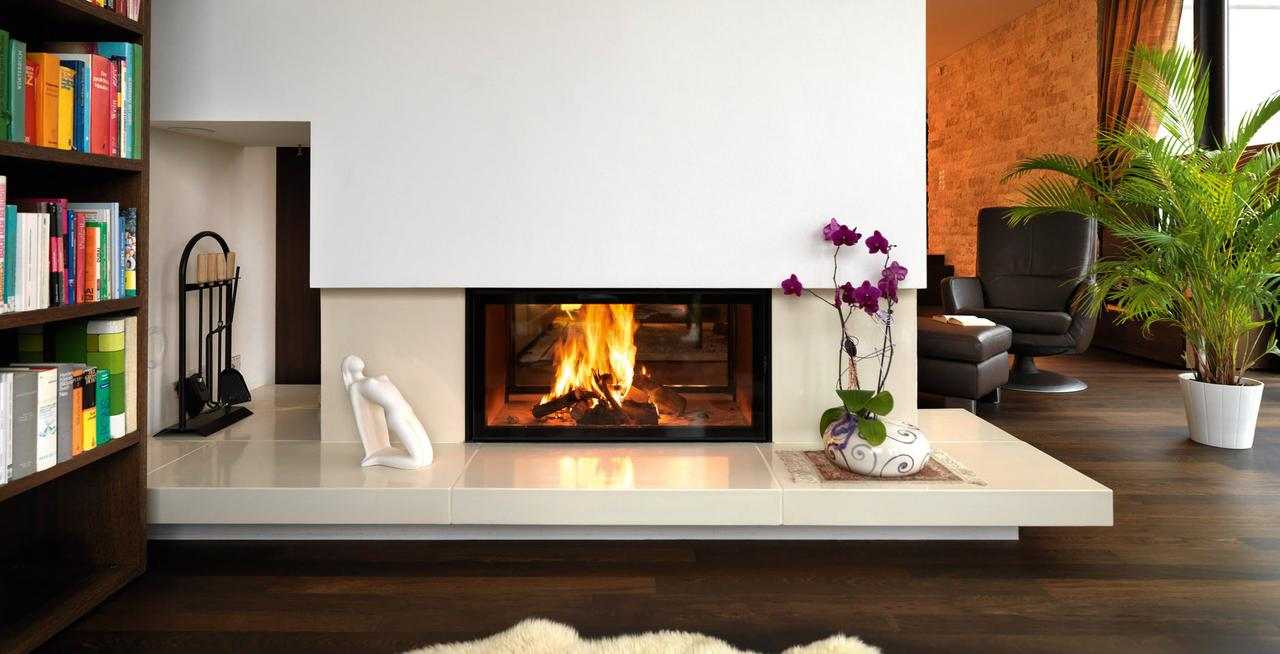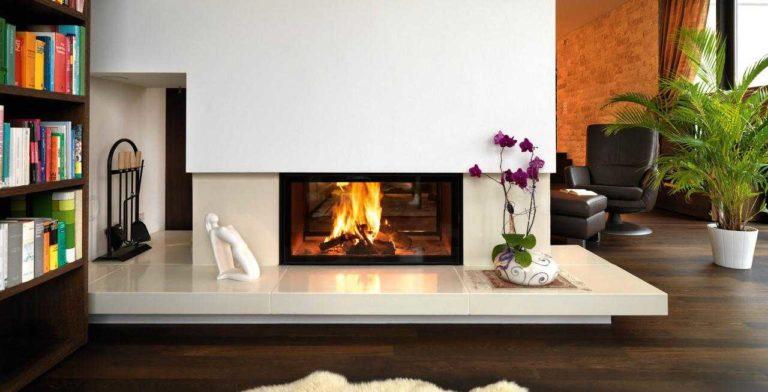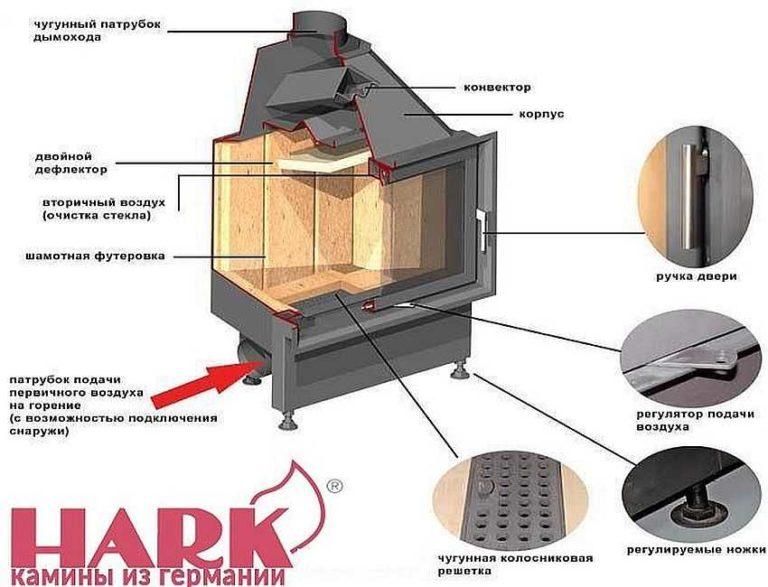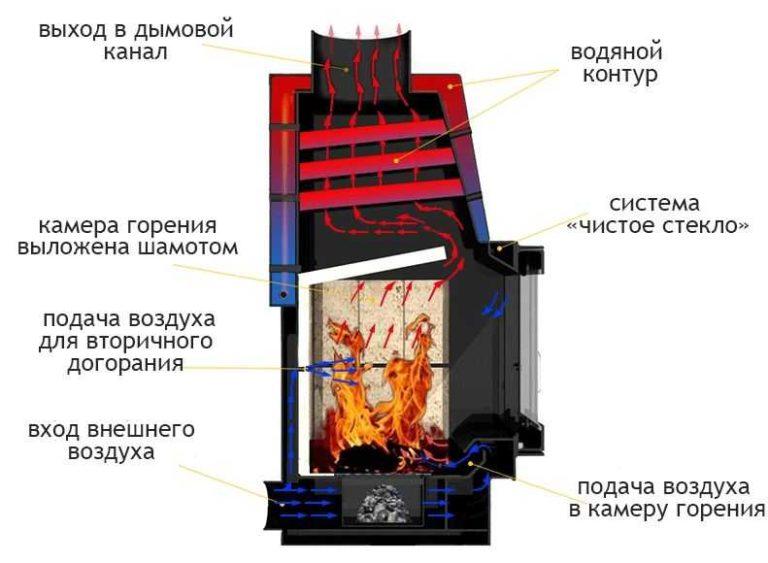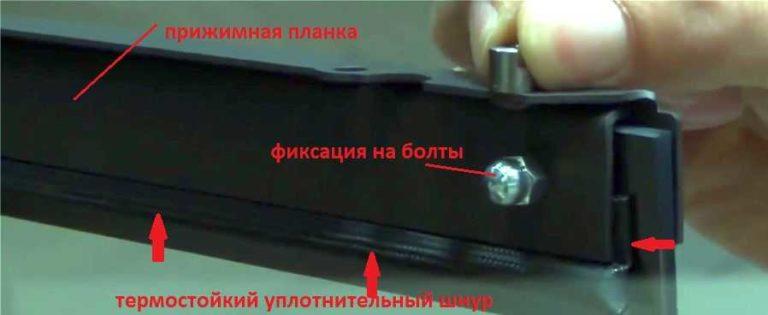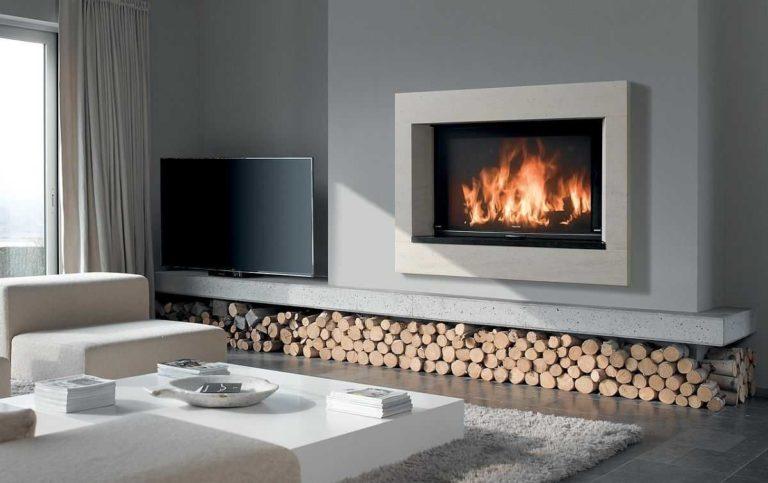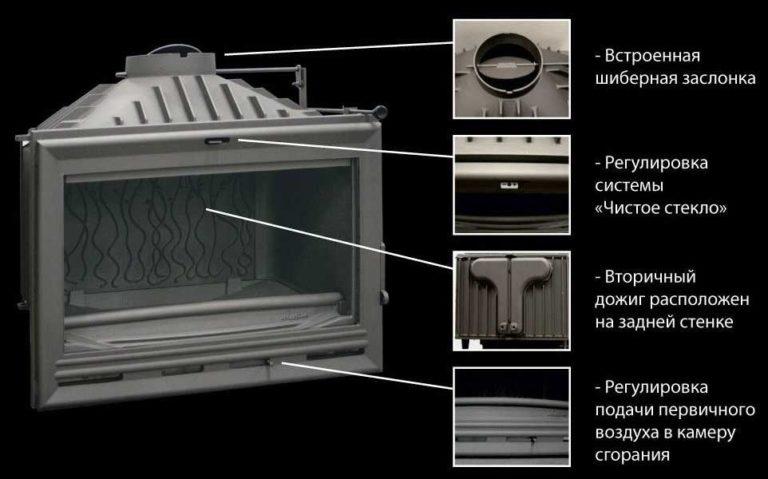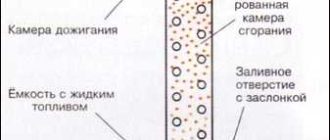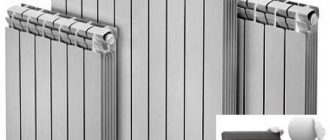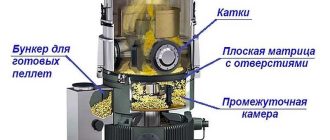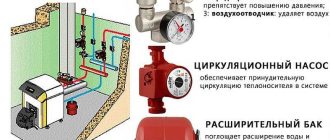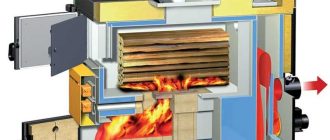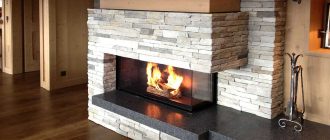Idag är det inte lika svårt att göra en öppen spis som det var för ett par decennier sedan. Det är inte nödvändigt att lägga ut det av tegel, det finns metallinsatser som måste utformas i enlighet därmed. Kallas denna insats - eldstad eldstad eller eldstad insats. Den är gjord av värmebeständigt stål och gjutjärn. Vad de är och hur man väljer, vi tittar vidare.
Innehåll i artikeln
Vilken eldstad för öppen spis är bättre öppen eller stängd
I allmänhet är den öppna spisen som värmeelement effektiv i ett välisolerat hus. Då kan det vara den viktigaste och till och med den enda värmekällan. Men det är inte lätt att göra en fullfjädrad uppvärmning på grundval av en öppen spis. I vilket fall som helst, till att börja med måste du bestämma - öppen eller stängd eldstad eldstad du behöver. Öppen - mycket lik den traditionella härden, men moderna versioner är gjorda av gjutjärn eller värmebeständigt stål. Och det finns inget behov av att lägga ut det av tegel.
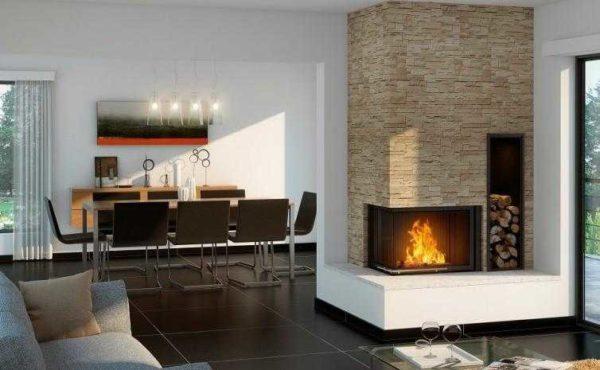
Stängd eldstad eldstad är gjord av metall, men skiljer sig åt genom att den är hermetisk - har en tätt monterad dörr som skiljer eldstaden från rummet. Förutom utseende finns det många andra funktioner. Det här är de som hjälper dig att göra ett val.
Eldstäder för öppna spisar
När vi tänker på en öppen spis finns det en bild: härd, sprakande trä, dansande lågor. Allt är så, men låt oss uppskatta alla charmar hos en sådan uppvärmningsanordning:
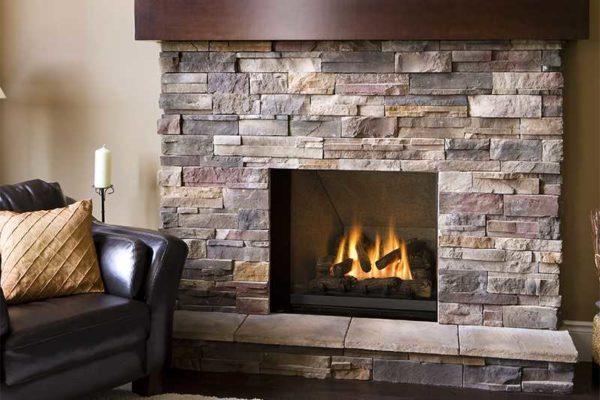
Så om du bara behöver en öppen spis för estetik, är en öppen spis eldstad bra. Men det är bara du som bör vara medveten om alla de associerade fenomen som du kommer att behöva möta.
Slutna eldstäder
Slutna eldstäder har funnits ett tag nu. De är bekvämare, mer ekonomiska och säkrare. Vissa modeller har en så stor glasruta att du kan beundra elden från nästan var som helst. Om du också vill lyssna på sprakandet från veden kan du öppna dörren. Här är fler fördelar:
I själva verket är eldstaden eldstaden, detta är en av underarterna av en värmekamin. Det skiljer sig åt i den breda dörren, eldstadens format och valvets form. Men estetiskt är de mycket mer attraktiva än vanliga spisar.
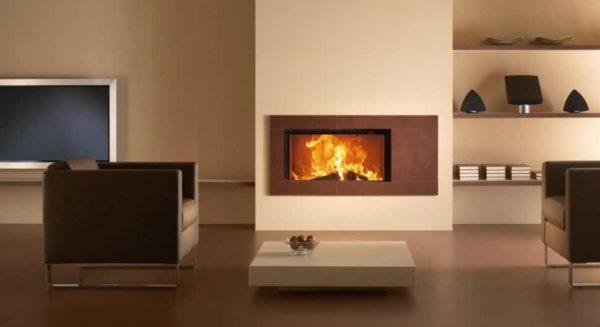
Det är värt att säga att eldstaden eldstad av den slutna typen, är bra som ett dekorativt element. Men den kan användas som en del av värmesystemet. Det finns eldstäder med ett vattenregister för anslutning av värmeradiatorer. Detta är naturligtvis ett alternativ för amatören, men också genomförbart. Precis när du väljer "för skönhet", litar mer på säkerhet och utseende. När du väljer "för uppvärmning", om än ytterligare, tittar du mer på prestandaegenskaperna och skjuter skönhet till bakgrunden.
Gjutjärn eller stål
Eldstadens eldstad kan vara stål eller gjutjärn. I allmänhet har tvister om vad som är bättre - gjutjärn eller stål för eldstäder och spisar pågått under lång tid. Och det finns inget entydigt svar. Varje alternativ är tvetydigt, var och en har för- och nackdelar. Låt oss lista dem: kaminnie-topki-14 kaminnie-topki-16
- Eldstäder av gjutjärn väger mer och har en större termisk tröghet. Å ena sidan är detta dåligt. Tills eldstaden värms upp blir det ingen värme. Å andra sidan tar det längre tid för gjutjärn att svalna och det blir varmare efter att veden har brunnit upp.
- Den låga vikten hos stålvarianter har sina fördelar - de kan enkelt placeras på vilken platta som helst utan att lasten behöver räknas om. Om den kombinerade vikten av konstruktionen av eldstaden + portalen överstiger 200 kg, är det nödvändigt att förstärka golvet. Om taket är av betong är allt bra, men under lagren behövs ett extra stöd.
- Stål kan svetsas. Detta ger ett enormt utrymme för olika design. Gjutjärn är bara gjutet, och skapandet av nya modeller är en lång och komplex process. Därför är gjutjärnsmodeller mer konservativa. Men eldstaden eldstaden är oftast dold i portalen.
- Stål, även tjockt och högkvalitativt, brinner igenom. För att skydda väggarna från direkt värme täcker de dem med värmebeständiga material - gör foder. Detta förlänger deras livslängd, men beror på materialets kvalitet och utförandet av arbetet. Gjutjärnsväggar tål eld i årtionden. Inget stål, även med ett foder, kommer att pågå i trettio till fyrtio år.
- En eldstad i gjutjärn består vanligtvis av flera delar. De sammanfogas på ett lufttätt sätt. Eldstäder av stål svetsas samman. Sömmen är en svag punkt, men korrekt utförd är den ganska tillförlitlig. Det är dock ofta sömmarna som startar förstörelsen av metaller.
- Om det kommer vatten på det heta gjutjärnet spricker det.
- Sprucket gjutjärn kan inte repareras. Det är bara nödvändigt att helt ersätta det skadade fragmentet. Om sådana modeller fortfarande produceras av fabriken kan du beställa den nödvändiga delen. Stål kan svetsas, sätta en lapp etc.
Förhoppningsvis kunde du dra en slutsats för dig själv, vilken eldstad för öppen spis är bättre av stål eller gjutjärn. Båda alternativen är inte idealiska, men preferens ges vanligtvis till gjutjärn. Det är mer hållbart, vilket vanligtvis är det avgörande argumentet.
Typer av eldstäder för öppna spisar
De flesta modellerna är fästa på väggen. Denna installationsmetod kan betraktas som traditionell, det gjorde också våra förfäder. Det finns en annan teknik - inbyggda eldstäder. I det här fallet är väggen eller skiljeväggen speciellt modifierad eller byggd, en skorsten och alla andra delar av systemet läggs i dem. Sådana eldstäder är tillgängliga för installation i hörnet (som på bilden nedan till vänster). De har en trapetsformad form som avsmalnar bort från dörren. När den installeras direkt mot väggen är kroppen rektangulär.
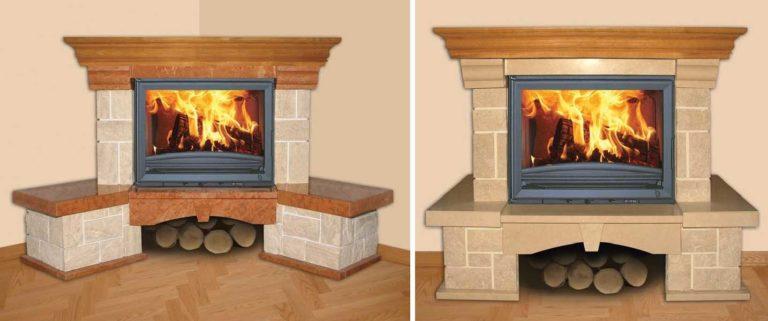
Hörneldstäder är bra eftersom de tar upp det utrymme som är svårast att använda. Men den avsmalnande formen på eldstaden kräver ved av mindre storlek. Andra punkten. Med samma dörrbredd har hörneldstäder något mindre värmeeffekt eftersom förbränningskammarens volym är mindre. Men eldstaden i hörnet gör att du kan spara på material för portalen, eftersom det redan finns två väggar.
Per typ av glasrutor
Först uppträdde eldstäder med rakt, rundat eller trapetsformat glas. Glaset var nödvändigtvis inneslutet i en metallram, gångjärn till höger eller vänster. Följaktligen, om dörren öppnas till höger, kallas de högersidiga, om vänster, då vänstersidiga. Om glaset är symmetriskt är det möjligt att välja vilket håll dörren ska öppnas åt.
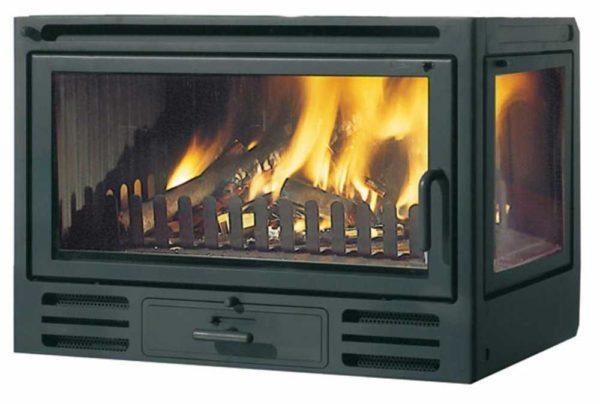
Sådana modeller är attraktiva, men utsikten är fortfarande begränsad. Moderna interiörer dikterar sina egna regler, och tillgängligheten av brandbeständigt glas böjd form och transparenta brandbeständiga tätningsmedel, fick skapa mer intressanta modeller. Förutom de vanliga eldstäderna med platt dörr finns det mer intressanta (och dyra) sorter:
- Tunnel (genomskinlig). En öppen spis för två rum, den byggs in i väggen och värmer intilliggande rum.
- Dubbelsidig med L-formad glasning. Lågorna kan beundras från båda sidor. De kan vara höger- och vänstersidiga.
- Tresidigt med U-format glas. Endast den bakre väggen är stängd.
Det finns olika sätt att öppna dörren: åt sidan på gångjärn eller genom att lyfta upp den. En eldstad med ett stigande glas kallas en giljotin. Dessa alternativ är dyrare, men eldstaden kan se ut som en öppen eldstad, med dörren som dras uppåt i en slits som är anordnad ovanpå. De kan fungera med antingen en stängd eller öppen dörr. Alternativ för gångjärnsdörrar är mer utformade för stängd dörrläge.
Vad du ska vara uppmärksam på när du väljer billiga eldstäder
Alla eldstäder kan delas in i tre kategorier: billiga, medelprisklass och dyra. Det handlar i första hand inte om tillverkaren och dess namn, utan om kvaliteten och den teknik som används. Det finns inga mirakel. Det är omöjligt att köpa en billig spisplatta med samma indikatorer som den dyra. Men i varje prisklass finns det bättre och sämre modeller. Till samma pris kan kvaliteten skilja sig avsevärt. Det som är typiskt är att ju högre prisklass, desto mindre skillnader mellan produkter från olika tillverkare. Så om du vill välja bland de billiga, inspektera noggrant de modeller du väljer.
Det första och viktigaste är metallens kvalitet. Om det är stål, se till att det är värmebeständigt, kontrollera sömmarnas kvalitet. De ska vara jämna, utan svällningar, grottor etc. Kvaliteten på gjutjärn kontrolleras genom extern inspektion. Ju jämnare gjutningen är, desto högre är kvaliteten. Väggtjockleken på eldstäder av stål och gjutjärn är också viktig. Speciellt vid valvet, där värmebelastningen är som störst. Där bör tjockleken vara maximerad.
Täthet i eldstaden
Det första och viktigaste är att eldstadens eldstad för effektiv drift måste vara lufttät. Då kan den fungera i vilket läge som helst - aktiv förbränning, smoldering etc. Det är detta som skiljer dyra modeller från billiga: graden av tätning. Välj därför en budgetmodell och var uppmärksam på förmågan att reglera lufttillförseln.
- System för lufttillförsel. Vanligtvis tillförs luften genom askskålen. Under dörren görs spår som överlappas av rörliga klaffar. En spak i botten eller på sidan. Genom att öppna och stänga lufttillförseln reglerar vi förbränningsintensiteten. Det kan finnas flera justeringar, men de är alla meningsfulla om de gör att du helt kan stänga av tillförseln. Kontrollera hur väl de passar, hur säkert de stänger av lufttillförseln.
- Tätningen på dörren. Den är tillverkad av keramisk sladd och går runt omkretsen utan att hoppa över. Inte i botten eller på två eller tre sidor. Snöret ska vara brett (gå längre utanför ramen) och mjukt. Om den har förlorat sin elasticitet eller är gjord i jämnhöjd med spåret i en ny eldstad blir det ingen lufttäthet.
- Hur glaset pressas mot dörrkarmen. Helst - ett metallhörn, som pressas av hållare. Och en sak till: hållarna ska vara pålitliga och tillverkade av bra metall (du kan inte böja dem med fingrarna).
- Glastätning runt hela omkretsen mellan glaset och dörrens karm. Bättre samma keramiska sladd, men plattare. Tätningsmedlet är inte dåligt, men sladden är bättre.
- Rengöringssystem för glas. Detta är hålen i toppen av dörrkarmen ovanför glaset. Genom hålen kommer luft in som sedan förs ner och för med sig sot och slagg. På så sätt förblir glaset renare längre. Observera: Glaset måste ändå rengöras ibland.
- Metod för att öppna skorstensgallret. Det billigaste på bultar, men också den mest opålitliga. Om du väljer en bultad anslutning, när du installerar, se till att det finns möjlighet till åtkomst, för reparation och byte av bultar eller muttrar.
Som ni ser finns det tillräckligt med parametrar och det här är bara de viktigaste. Det finns också skönheten. Om budgeten tillåter, välj en ramlös dörr. De ser mycket mer solida ut, även om de kostar mer.
Bränsleeffektivitet
Om eldstaden ska fungera för uppvärmning, och inte bara för skönhet, är dess ekonomi viktig. Ekonomisk blir den när värmen extraheras maximalt. Var därför uppmärksam på tillgängligheten av en sekundär lufttillförsel.
Vanligtvis tillförs luft genom gallret. Det kommer in i träet, de brinner. Under processen bildas fler gaser. De flesta av dem är brandfarliga och värmen från deras förbränning är större än den värme vi får när vi eldar ved. Om du antänder dessa gaser blir värmen mycket större. För att få dem att brinna behöver man bara tillsätta syre.
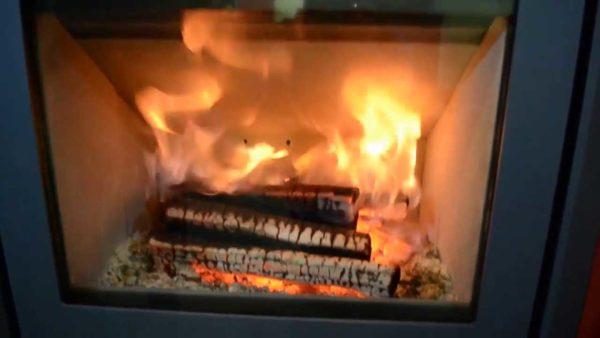
För detta ändamål görs hål i bakväggen och i den övre delen av eldstaden. Detta är den sekundära lufttillförseln för efterförbränning av gaser. Luft matas in i den övre delen av eldstaden och blandas med de glödande gaserna. Denna blandning flammar upp, vilket ger ytterligare värme. Denna process kan observeras. Vid förbränning bildas ett brandlock högst upp i eldstaden. Men återigen är vi uppmärksamma, detta är meningsfullt i en förseglad eldstad, där lufttillförseln är normaliserad.
Funktioner hos giljotineldstäder
Om du är intresserad av en eldstadskamin med vertikal öppning, kommer det fortfarande att vara nödvändigt att välja mekaniken för lyftmekanismen. Sådana modeller är redan till kategorin billig att inte tillskriva. Det finns tre alternativ för öppning:
- rullar;
- kabel;
- kedja.
Rullar är det mest praktiska. Smidig körning, liten ansträngning som måste tillämpas. Rullarna är tillverkade av metall, som väl tolererar överhettning, men med tiden kan de slitas av. Detta kommer att göra öppningen mer problematisk.
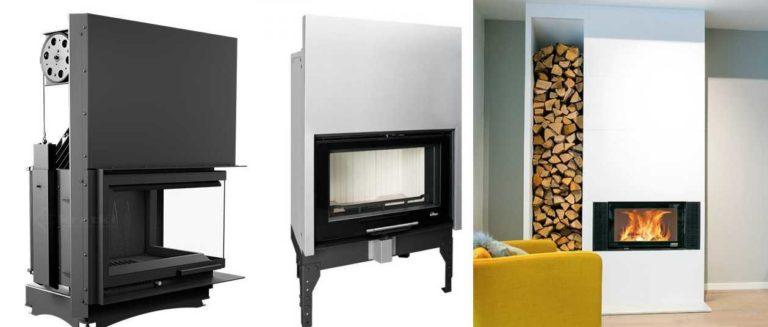
Mekanismerna kan använda kedjor eller rep Kedjor är mer tillförlitliga, men bullrar mer. Repet glider tyst, men när det värms upp kan det sträcka sig kraftigare, vilket kan komplicera processen. Det är omöjligt att definitivt säga att något av systemen är mer eller mindre tillförlitligt. Det som är säkert är att kedjan låter mer. Om detta är kritiskt för dig, välj en rep- eller rullmekanism.
Glas: dubbel-, trippel- eller spegelglas
Eldstadens eldstad av sluten typ har en stor glasyta. Om det finns ett enda glas avger det mycket värme. För att minska mängden värme som tränger igenom glaset, sätt dubbel eller trippel. Det andra alternativet - med spegelsprutning. Värme reflekteras inuti eldstaden, vilket ökar temperaturen, och detta leder till en mer fullständig förbränning av bränsle.
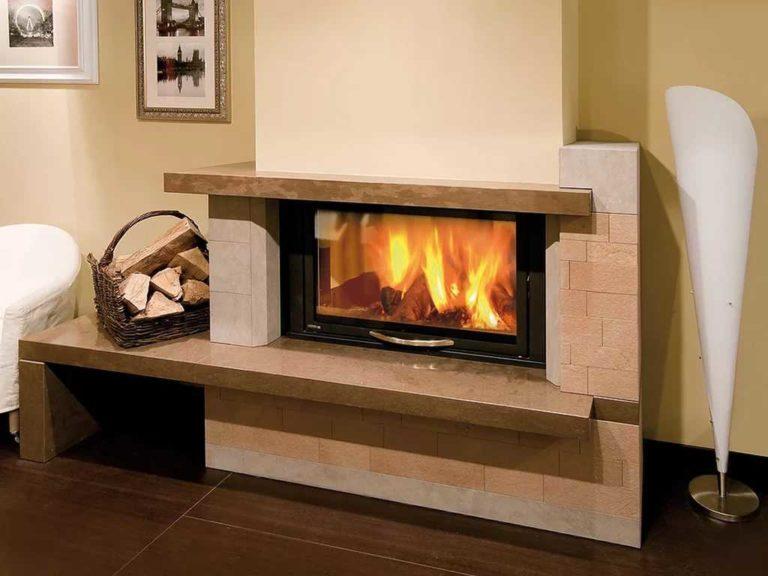
Sprutning är mer effektivt, men också dyrare. Tvåglasfönster är billigare, men har sämre prestanda. Men dubbel- eller trippelglas bidrar till att det förblir renare längre. Även om det beror mer på hur väl det självrengörande systemet är gjort.
Öppen spis eldstad för uppvärmning: särdrag i valet
När du väljer en eldstad för uppvärmning är det nödvändigt att vara uppmärksam på de indikatorer som ökar utrustningens livslängd. När allt kommer omkring, med aktiv användning, är resursen snabbt uttömd och den ska vara tillräckligt stor. Den andra punkten är kostnaden för uppvärmning. Enheten ska effektivt använda bränsle, då kommer uppvärmningen att vara ekonomisk.
- Var uppmärksam på väggtjocklek och vikt. Ju större väggtjocklek, desto längre livslängd. Ju högre densitet och vikt, desto högre termisk inerti i eldstaden. Detta är viktigt när förbränningen upphör. Du kommer inte att lägga in ved i eldstaden hela tiden. På natten lämnas eldstaden att brinna ut. Här en stor termisk tröghet och kommer att spela en roll, uppvärmda väggar i ugnen kommer att ge värme, upprätthålla förbränning och temperatur i huset. Det andra positiva ögonblicket med en stor tröghet, varm ugn stabiliserar draget, kondens bildas inte och tjänar utrustningen längre.
- Kvaliteten på anslutningen av eldstadens delar. Det finns flera sätt att montera eldstäder för gjutjärnspisar:
- I ett stycke. Hela eldstaden är gjuten i ett enda stycke. Mycket lufttätt, men också det dyraste alternativet.
- Förseglad montering. Fogarna mellan delarna smörjs in med tätningsmedel och skruvas sedan ihop. Det billigaste alternativet. Beror på den mänskliga faktorn. Det är viktigt hur jämnt och utan springor tätningsmedlet läggs. Den andra nackdelen, tätningsmedlets hållbarhet.
- Montering med hjälp av keramisk sladd. Delarna läggs med en tätande sladd och dras sedan åt med bultar. Det finns ett spår för sladden, så att dess läggning är mindre beroende av en person. Men tätningens tillförlitlighet och dess hållbarhet beror på sladdens egenskaper, och bra sladdar är dyra.
- Skorstenens diameter. För att spara bränsle är det bättre om skorstenen har ett litet tvärsnitt, långsammare rörlig luft, långsammare och mer fullständig förbränning av bränsle. Korrekt system för rengöring av glas. Det här är inte bara slitsar ovanför glaset för luftflöde. Det är en labyrint av metall där luften först kastas in i eldstaden och sedan rör sig längs glaset. Det är bara det att slitsarna antingen inte fungerar och glaset ryker (när öppningarna är nästan stängda) eller så är lufttillförseln för aktiv, vilket gör att veden brinner snabbt. Detta är inte alls ekonomiskt, vilket är mycket viktigt när man använder den öppna spisen för uppvärmning.
- Efterbränningssystem. Detta är tillförseln av uppvärmd luft till toppen av eldstaden. I toppen sker sedan en sekundär antändning av brännbara gaser, som träet har sönderdelats på. De avger mer värme under förbränningen än själva träet. Så deras efterförbränning ger verkligen mer värme och gör att du kan spara ved.
Naturligtvis vill du att eldstaden i den öppna spisen ska vara vacker. Men när du använder den som värmeelement är skönhet inte det viktigaste. Mycket viktigare är kvalitetsegenskaperna.
Hur skiljer sig dyra eldstäder i gjutjärn från billiga?
Som redan sagt kan eldstaden eldstaden vara billig, medelprissatt och dyr. Med externa likheter finns det vissa skillnader. Och de är inte i de externa uppgifterna, även om detta också är närvarande. I kategorin högt pris används andra material. Skillnaden är denna.
Det verkar lite, men dessa små saker påverkar eldstadens arbete i stor utsträckning. Om du lyckas hitta en budgetmodell med bra tätning kan du säkert ta den. Om inte, titta i det mellersta prisklassen. Det är mer sannolikt att hitta det som krävs.
Dessutom rekommenderar vi att du läser artikeln "Tillverkare av eldstäder: vilka är de bästa?".

